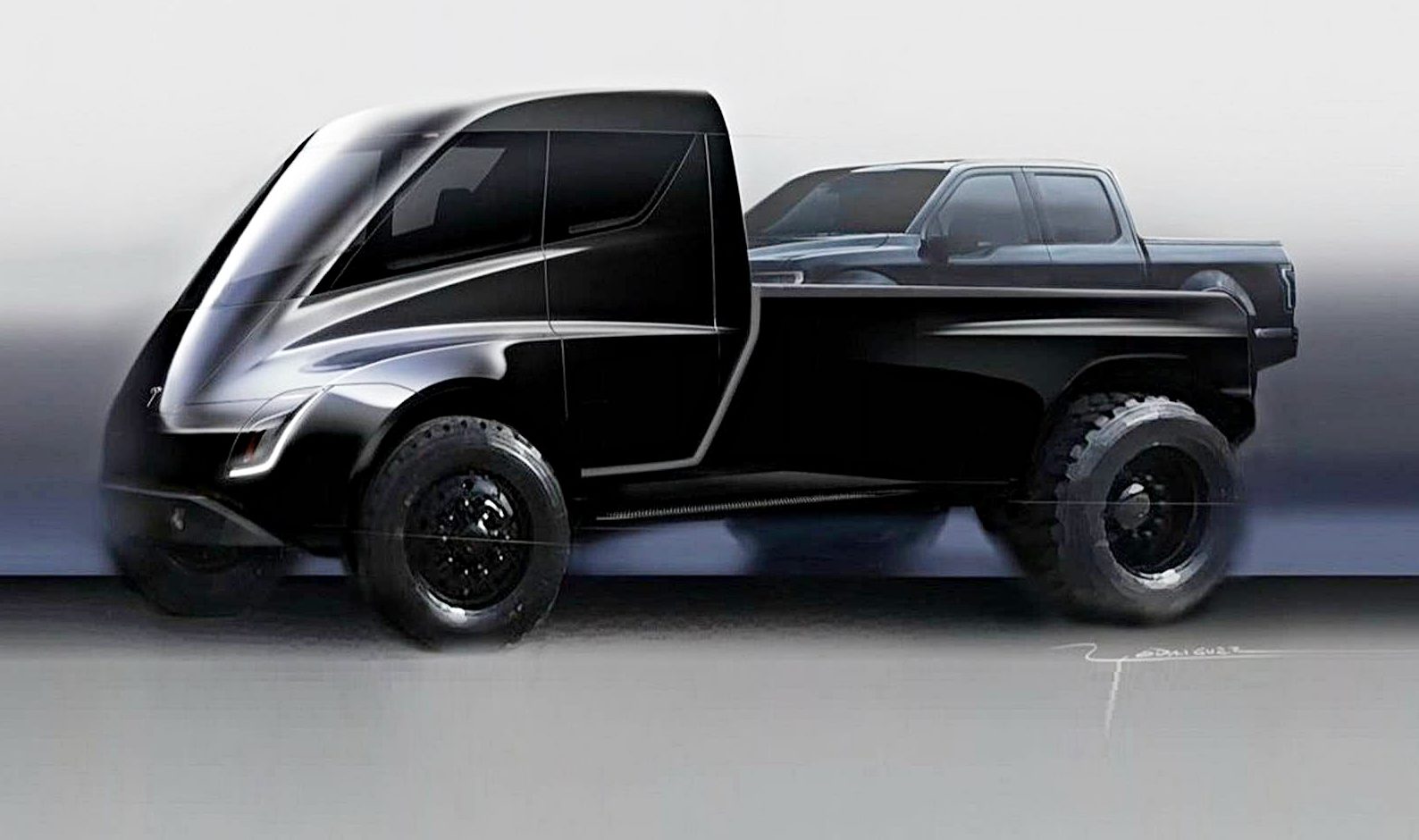
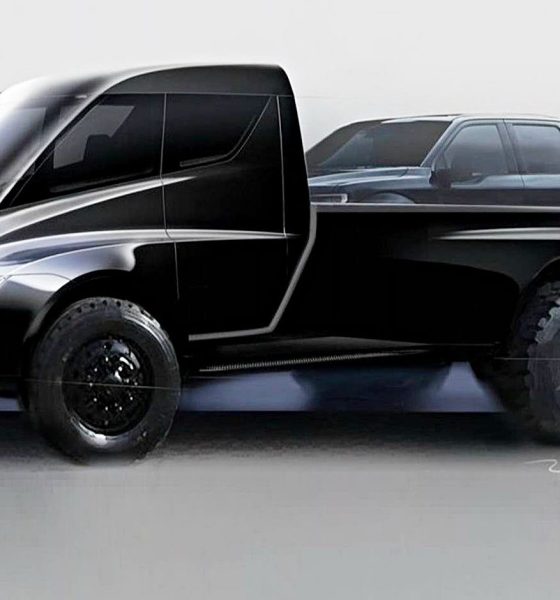
News
Elon Musk’s Tesla pickup truck will likely have few competitors from legacy auto
Elon Musk admits that while Tesla probably has the most exciting product roadmap in the industry today, he has a soft spot for the company’s upcoming pickup truck. In a recent appearance at the Recode Decode podcast hosted by veteran tech journalist Kara Swisher, Musk stated that the Tesla Truck would be “super futuristic,” to the point where it would not look out of place in the Blade Runner franchise.
Musk candidly added that if the first pickup, with its cyberpunk tech and features, proves too radical for the market, then Tesla would release a more conventional truck. Ultimately, it remains to be seen if the company would breach the pickup market through Elon Musk’s Blade Runner cyberpunk truck or a more conventional pickup, but one thing is sure. Tesla would soon be competing in America’s most lucrative auto segment.
It could be argued that pickup trucks are the quintessential American vehicles. In 2017 alone, pickup truck sales across the US accounted for 16.4% of the country’s total car sales. Within this number were nearly 900,000 Ford F-Series pickups and about 950,000 GM-branded trucks. Speaking to Trucks.com last January, Michael Ramsey, an automotive analyst at Gartner Inc., noted that in several areas in the US, a truck is a preferable vehicle for consumers.
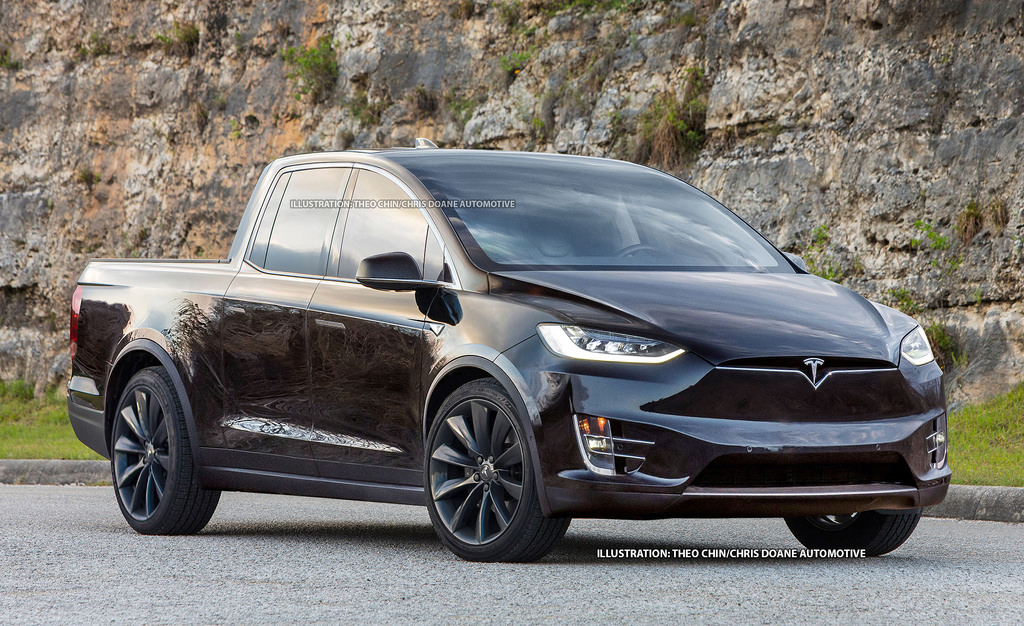
“In many areas of the country, the truck is just the preferred lifestyle look. They handle much better than before, and with the aid of technology, are even easier to navigate in tight spaces. The U.S. is ideally suited to bigger vehicles because of big parking spaces and roads,” the auto analyst said.
While the disruption of the auto industry with electric-powered vehicles could be felt in the passenger car market thanks to vehicles like the Tesla Model 3, the EV movement is yet to breach the pickup truck segment. EV startups like Bollinger Motors and Rivian are working on all-electric pickup trucks, but both companies are still building facilities capable of manufacturing vehicles on a mass scale. Rivian, for one, is tooling its 2.6 million sq ft factory in Normal, IL. Legacy automakers, which actually have the necessary infrastructure to mass produce all-electric trucks, have mostly taken a rather conservative stance.
Ford has noted that it is developing a hybrid version of its best-selling F-150 pickup truck. In a post on its official website, the company stated that the F-150 hybrid would be a vehicle with no-compromises, “from low-end torque for extra pulling power to serving as a mobile generator on the job site.” Ford, though, has not announced an official release date for the vehicle, though there is speculation that the legacy automaker would launch the hybrid truck around 2020.
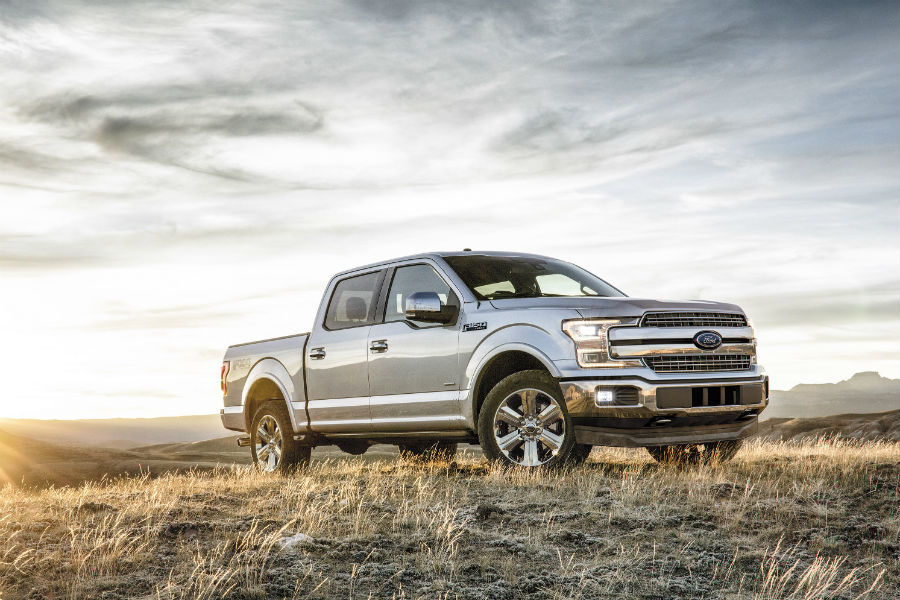
GM, on the other hand, recently took an even more conservative stance. In a statement to the Detroit Free Press, vice president of global strategy Mike Abelson declared that GM would lead the EV industry in the “next decade or so.” Despite this, Abelson noted that its core business — comprised of large, gasoline and diesel-powered pickup trucks — would remain intact for the next couple of decades.
“The core business is going to be the core business for a couple of decades to come. There will not be any AV/EV pickups,” Abelson said.
With legacy automakers seemingly taking their time once more, Elon Musk’s Blade Runner truck might end up being one of the first movers in the electric pickup market. And if there is anything that could be learned in the domination of the Model S and 3 in their respective segments, ignoring Tesla and the potential of its vehicles could be a pretty big mistake.
In a brief brainstorming session on Twitter earlier this year, Elon Musk accepted suggestions for features that would be useful for the upcoming Tesla pickup truck. Among these include four-wheel steering, the capability to parallel park itself, seating for six people, a 240-volt connection for power tools, and a maximum towing capacity of 300,000 pounds. Tesla is yet to provide a teaser for the release date of its pickup truck, though speculations are high that the vehicle would be announced after the Model Y, which is expected to be unveiled in 2019.

News
Tesla FSD Supervised ride-alongs in Europe begin in Italy, France, and Germany
The program allows the public to hop in as a non-driving observer to witness FSD navigate urban streets firsthand.

Tesla has kicked off passenger ride-alongs for Full Self-Driving (Supervised) in Italy, France and Germany. The program allows the public to hop in as a non-driving observer to witness FSD navigate urban streets firsthand.
The program, detailed on Tesla’s event pages, arrives ahead of a potential early 2026 Dutch regulatory approval that could unlock a potential EU-wide rollout for FSD.
Hands-Off Demos
Tesla’s ride-along invites participants to “ride along in the passenger seat to experience how it handles real-world traffic & the most stressful parts of daily driving, making the roads safer for all,” as per the company’s announcement on X through its official Tesla Europe & Middle East account.
Sign-ups via localized pages offer free slots through December, with Tesla teams piloting vehicles through city streets, roundabouts and highways.
“Be one of the first to experience Full Self-Driving (Supervised) from the passenger seat. Our team will take you along as a passenger and show you how Full Self-Driving (Supervised) works under real-world road conditions,” Tesla wrote. “Discover how it reacts to live traffic and masters the most stressful parts of driving to make the roads safer for you and others. Come join us to learn how we are moving closer to a fully autonomous future.”
Building trust towards an FSD Unsupervised rollout
Tesla’s FSD (Supervised) ride-alongs could be an effective tool to build trust and get regular car buyers and commuters used to the idea of vehicles driving themselves. By seating riders shotgun, Tesla could provide participants with a front row seat to the bleeding edge of consumer-grade driverless systems.
FSD (Supervised) has already been rolled out to several countries, such as the United States, Canada, Australia, New Zealand, and partially in China. So far, FSD (Supervised) has been received positively by drivers, as it really makes driving tasks and long trips significantly easier and more pleasant.
FSD is a key safety feature as well, which became all too evident when a Tesla driving on FSD was hit by what seemed to be a meteorite in Australia. The vehicle moved safely despite the impact, though the same would likely not be true had the car been driven manually.
News
Swedish union rep pissed that Tesla is working around a postal blockade they started
Tesla Sweden is now using dozens of private residences as a way to obtain license plates for its vehicles.

Two years into their postal blockade, Swedish unions are outraged that Tesla is still able to provide its customers’ vehicles with valid plates through various clever workarounds.
Seko chairman Gabriella Lavecchia called it “embarrassing” that the world’s largest EV maker, owned by CEO Elon Musk, refuses to simply roll over and accept the unions’ demands.
Unions shocked Tesla won’t just roll over and surrender
The postal unions’ blockade began in November 2023 when Seko and IF Metall-linked unions stopped all mail to Tesla sites to force a collective agreement. License plates for Tesla vehicles instantly became the perfect pressure point, as noted in a Dagens Arbete report.
Tesla responded by implementing initiatives to work around the blockades. A recent investigation from Arbetet revealed that Tesla Sweden is now using dozens of private residences, including one employee’s parents’ house in Trångsund and a customer-relations staffer’s home in Vårby, as a way to obtain license plates for its vehicles.
Seko chairman Gabriella Lavecchia is not pleased that Tesla Sweden is working around the unions’ efforts yet again. “It is embarrassing that one of the world’s largest car companies, owned by one of the world’s richest people, has sunk this low,” she told the outlet. “Unfortunately, it is completely frivolous that such a large company conducts business in this way.”
Two years on and plates are still being received
The Swedish Transport Agency has confirmed Tesla is still using several different workarounds to overcome the unions’ blockades.
As noted by DA, Tesla Sweden previously used different addresses to receive its license plates. At one point, the electric vehicle maker used addresses for car care shops. Tesla Sweden reportedly used this strategy in Östermalm in Stockholm, as well as in Norrköping and Gothenburg.
Another strategy that Tesla Sweden reportedly implemented involved replacement plates being ordered by private individuals when vehicles change hands from Tesla to car buyers. There have also been cases where the police have reportedly issued temporary plates to Tesla vehicles.
News
Czech Deputy excited for Tesla FSD, hints at Transport Committee review
The ANO party lawmaker shared his thoughts about FSD in a post on social media platform X.
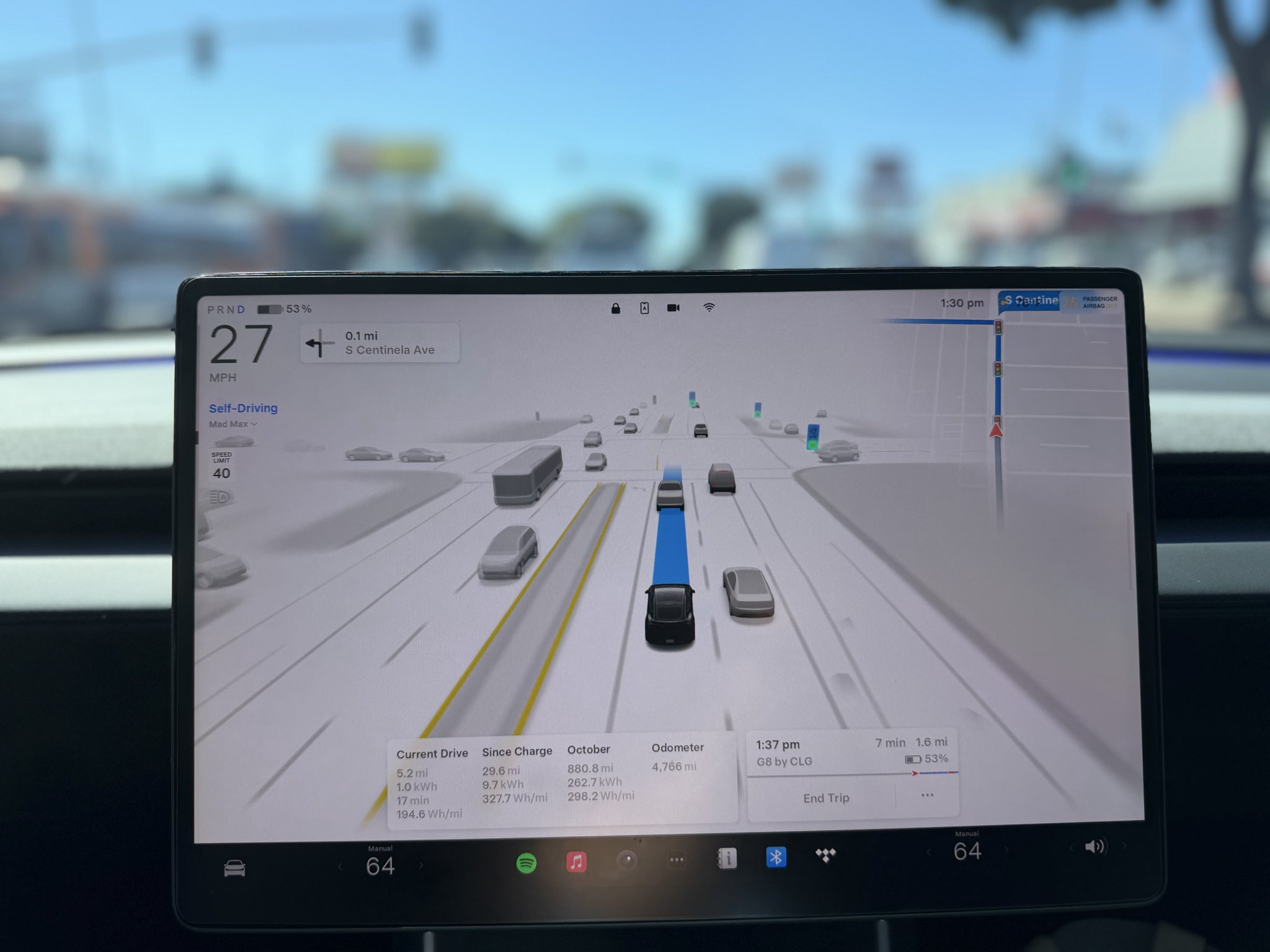
Martin Kolovratník, a Czech Republic Chamber of Deputies member, has expressed his excitement for Tesla’s Full Self-Driving (FSD) after an apparent constituent called for a quick approval for the advanced safety system.
The ANO party lawmaker, who drives both diesel and EV, shared his thoughts about the matter in a post on social media platform X.
The official’s initial statements
Kolovratník kicked off the exchange with a post outlining his coalition’s efforts to scrap highway toll exemptions for electric vehicles and plug-ins starting in 2027.
“Times have changed. Electric vehicles are no longer a fringe technology, but a full-fledged part of operations. And if someone uses the highway network, they should follow the same rules as everyone else. That’s the basis of fairness,” he wrote.
He emphasized equity over ideology, noting his personal mix of diesel and electric driving. “For this reason, there is no reason to continue favoring one technology at the expense of another… It’s not about ideology, it’s about equal conditions. That’s why we clearly agreed within the new coalition: the exemption for electric vehicles and plug-ins will end in 2027. The decision is predictable, understandable, and economically sound.”
Tesla FSD enthusiasm
The conversation pivoted to Tesla’s FSD when X user @robotinreallife, who seems to be one of the official’s constituents, replied that other matters are more important than ending highway exemptions for EVs.
“I’m happy to pay for the highway, but I have a question about a much more fundamental matter: The Netherlands will approve the operation of Tesla FSD in February 26, a technology that has been proven to reduce accidents. The Czech Republic has the option to immediately recognize this certification. Do you plan to support this step so that we don’t unnecessarily delay?” the X user asked.
Kolovratník responded promptly, sharing his own excitement for the upcoming rollout of FSD. “I know about it. I like it and it seems interesting to me. Once we set up the committees and subcommittees, we’ll open it right away in that transport one. Thanks for the tip, I’ll deliver the report,” the official noted in his reply on X.
Kolovratník’s nod to FSD hints at the system’s potentially smooth rollout to Czechia in the coming year. With the Netherlands possibly greenlighting FSD (Supervised) in early 2026, Kolovratník’s commitment could accelerate cross-border certification, boosting FSD’s foray into Europe by a notable margin.









